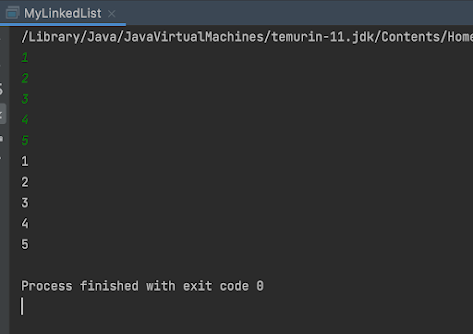Hello friends, we meet again on our journey to Java. I hope you guys are enjoying Java and are trying hands-on too. Today we are gonna discuss a very easy topic (yeah, I mean it :p). But, do not get carried away just by "easy", this is the hottest topic asked in various interviews, exams, and development purposes too. So, what's the wait? Let's start! As usual, let's start with a scenario. Let's say you want a data structure that stores data in a sequential manner, like an array. But, you don't know the size yet while initializing the data structure. Arrays don't support that, they need a size beforehand. So, what should we do? Do not worry, as Java is here to help us again. Let's explore it then!
What is Linked List Data Structure in Java?
There are several types of Linked List that we can work on. And, we can customize and create our own LinkedList and modify it to any level we want. Let's see two main types of linked list in Java
- Singly Linked list
- Doubly Linked list
2. What is Singly Linked List in Java?
A single linked list contains only a single link. In this list, only forward traversal is possible; we cannot traverse in the backward direction as it has only one link in the list.
Representation:
class Node {
int data;
Node next;
Node(int data) {
this.data = data;
this.next = null;
}
}
Java also provides a way to use LinkedList without creating a class ourselves. let us see a code example for the same.
2.1 Code Example:
import java.util.LinkedList;
import java.util.List;
import java.util.Scanner;
public class MyLinkedList {
public static void main(String[] args) {
List<Integer> list = new LinkedList<>();
Scanner sc = new Scanner(System.in);
for(int i=0;i<5;i++) {
list.add(sc.nextInt());
}
list.forEach(System.out::println);
}
}
3. Doubly linked list in Java
The doubly linked list, as its name implies, includes two pointers. The doubly linked list may be described as a three-part linear data structure: the data component, the address part, and the other two address parts.A doubly linked list, in other terms, is a list with three parts at each node: one data portion, a pointer to the previous node, and a pointer to the next node.In a doubly-linked list, each node contains two address parts: one holds the address of the next node, while the other stores the address of the previous node.The address portion of the first node in the doubly linked list is NULL, indicating that the preceding node's address is NULL.Representation:
class Node {
int data;
Node prev;
Node next;
Node(int data) {
this.data = data;
this.next = null;
this.prev = null;
}
}In the model above, we've built a user-defined class called Node, which has three members: one is data of integer type, and the other two are pointers of the node type, i.e. next and prev. The address of the next node is stored in the next pointer variable, whereas the address of the previous node is stored in the prev pointer variable.Java also provides a way to use Doubly Linked List.we have already seen how to use the LinkedList class instead of the List interface for this. let's see how it is done.Code:import java.util.LinkedList;
import java.util.Scanner;
public class MyLinkedList {
public static void main(String[] args) {
LinkedList<Integer> list = new LinkedList<>();
Scanner sc = new Scanner(System.in);
for(int i=0;i<5;i++) {
list.add(sc.nextInt());
}
list.addFirst(0);
list.addLast(10);
list.removeFirst();
list.removeLast();
list.forEach(System.out::println);
}
}Output:Hope you guys have understood basics of linked list. Hope to see you in the next article. But,before that, let's see few real world applications of linked list.4. Applications:
Image viewer - Prior and next photos are connected, so the next and previous buttons maybe used to access them.Previous and next page in a web browser - Because they are linked as a linked list, we mayaccess previous and next urls searched in a web browser by hitting the back and next buttons.Music Player - The previous and next songs in the music player are connected. You can playsongs from the beginning or the end of the list.See you in next article, till then, adios :D
- How does get() method of HashMap work in Java? (answer)
- HashMap vs Hashtable in Java? (answer)
- ArrayList vs HashMap in Java? (answer)
- HashSet vsHashMap in Java? (answer)
- 30 System Design Interview Questions for Practice (System design questions)
- ConcurrentHashMap vs HashMap in Java? (answer)
- How HashSet internally works in Java? (answer)
- How ConcurrentHashMap internally works in Java? (answer)
- HashMap vs LinkedHashMap in Java? (answer)
- The best way to iterate over HashMap in Java? (answer)
- How to sort the HashMap on keys and values in Java? (solution)
- 3 ways to loop over a Map in Java? (example)
- HashMap vs ConcurrentHashMap in Java? (answer)
- ArrayList vs HashMap in Java? (difference)
- How to convert Map to List in Java? (solution)
Thanks for reading this article so far. If you liek this LinkedList tutorial and example then please share with your friends and colleages. If you have any questions or feedback, please ask in comments.P. S. - If you are new to Java Programming and Development and want to learn Java in depth, you can also checkout these 10 Free Core Java Courses to staart with. It contains best free Java courses from Udemy and Coursera for beginners.


No comments:
Post a Comment
Feel free to comment, ask questions if you have any doubt.